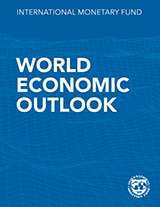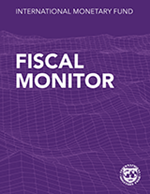Climate Mitigation
The Fund is intensifying its work on carbon pricing and helping governments craft road maps as they navigate their way from brown economies dependent on carbon to green ones that strive to be carbon free. Carbon taxes are one of the most powerful and efficient tools at their disposal—the latest IMF analysis finds that large emitting countries need to introduce a carbon tax that rises quickly to $75 a ton in 2030, consistent with limiting global warming to 2°C or less. But carbon taxes must be implemented in a careful and growth-friendly fashion. The key is to retool the tax system in fair, creative, and efficient ways.On the expenditure side, carbon taxes can be used to support low-income households and to support firms and households that choose green pathways.
Many countries subsidize the production and consumption of fossil fuels (rather than charging to discourage their use). And even when energy is heavily taxed, these taxes may not be very effective from an environmental perspective (e.g., taxes may be imposed on electricity use or vehicle sales rather than emissions or traffic congestion).

Publications
World Economic Outlook October 2020
How to Mitigate Climate Change
October 06, 2020

Fiscal Monitor October 2019
How to Mitigate Climate Change
October 16, 2019

FINANCE & DEVELOPMENT, DECEMBER 2019, VOL. 56, NO. 4 PDF VERSION
Nature’s Solution to Climate Change

IMF Papers
Climate Mitigation Policy in Denmark: A Prototype for Other Countries (November 12, 2020)
This paper discusses mechanisms to scale up domestic carbon pricing, compensate households, and possibly combine pricing with a border carbon adjustment. It also recommends the use of revenue-neutral feebate schemes to strengthen mitigation incentives, particularly for transportation and agriculture, fisheries and forestry, though these schemes could also be applied more widely.
Sectoral Policies for Climate Change Mitigation in the EU (September 16, 2020)
This paper discusses sectoral policies needed to achieve the ambitious greenhouse gas (GHG) emissions reduction targets announced in the European Union’s Green Deal, complementing the companion paper “EU Climate Mitigation Policy”, which focuses on broader EU-level policies.
EU Climate Mitigation Policy (September 16, 2020)
This paper aims to contribute to the debate on the choice of policies to reach the more ambitious 2030 emission reduction goals currently under consideration. It provides an analysis of the macroeconomic and distributional impacts of different options to scale up the mitigation effort, and proposes enhancements to the existing EU policies.
Macroeconomic and Financial Policies for Climate Change Mitigation: A Review of the Literature (September 4, 2019)
Climate change is one of the greatest challenges of this century. Mitigation requires a large-scale transition to a low-carbon economy. This paper provides an overview of the rapidly growing literature on the role of macroeconomic and financial policy tools in enabling this transition.
Nature’s Solution to Climate Change: A strategy to protect whales can limit greenhouse gases and global warming, Finance & Development (September, 2019)
When it comes to saving the planet, one whale is worth thousands of trees.
Fiscal Policies for Paris Climate Strategies—from Principle to Practice (May 1, 2019)
This paper discusses the role of, and provides practical country-level guidance on, fiscal policies for implementing climate strategies using a unique and transparent tool laying out trade-offs among policy options.
Carbon Taxation for International Maritime Fuels: Assessing the Options (September 11, 2018)
This paper seeks to inform dialogue about the possibility of a carbon tax as a key element of GHG mitigation policy for international maritime transport. The paper discusses the case for the tax over alternative mitigation instruments, options for the practical design issues, and then presents estimates of the impacts of carbon taxation and other instruments from an analytical model of the maritime sector.
Mitigation Policies for the Paris Agreement: An Assessment for G20 Countries (August 30, 2018)
This paper provides an illustrative sense of this information for G20 member countries (which account for about 80 percent of global emissions) under plausible (though inevitably uncertain) projections for future fuel use and price responsiveness. Quantitative results underscore the generally strong case for (comprehensive) pricing over other instruments, its small net costs or often net benefits (when domestic environmental gains are considered), but also the potentially wide dispersion (and hence inefficiency) in emissions prices implied by countries’ mitigation commitments.
Canada’s Carbon Price Floor (March 8, 2018)
This paper discusses the rationale for, and design of, the price floor requirement; its (provincial-level) environmental, fiscal, and economic welfare impacts; monitoring issues; and (national-level) incidence. The general conclusion is that the welfare costs and implementation issues are manageable, and pricing provides significant new revenues. A challenge is that the floor price by itself appears well short of what will be needed by 2030 for Canada’s Paris Agreement pledge.
How Should Shale Gas Extraction Be Taxed? (November 16, 2017)
This paper suggests that the environmental and commercial features of shale gas extraction do not warrant a significantly different fiscal regime than recommended for conventional gas. Fiscal policies may have a role in addressing some environmental risks (e.g., greenhouse gases, scarce water, local air pollution) though in some cases their net benefits may be modest. Simulation analyses suggest, moreover, that special fiscal regimes are generally less important than other factors in determining shale gas investments (hence there appears little need for them), yet they forego significant revenues.
Reforming Energy Policy in India: Assessing the Options (May 3, 2017)
Spreadsheet models are used to assess the environmental, fiscal, economic, and incidence effects of a wide range of options for reducing fossil fuel use in India. Among the most effective options is ramping up the existing coal tax. Annually increasing the tax by INR 150 ($2.25) per ton of coal from 2017 to 2030 avoids over 270,000 air pollution deaths, raises revenue of 1 percent of GDP in 2030, reduces CO2 emissions 12 percent, and generates net economic benefits of approximately 1 percent of GDP. The policy is mildly progressive and (at least initially) imposes a relatively modest cost burden on industries.








